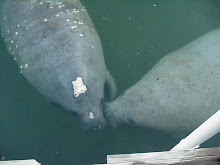Day one of our Charleston, South Carolina trip (July 6-14, 2017) had us on the road heading north around 3 p.m. We had a late start because we had to help the county's historical center with a summer program for school kids. But when we finished with that we officially started our trip.
We stopped by Spud's apartment for a short visit (about an hour) and chatted with Spud and his girlfriend. We also dropped of some furniture that Spud wanted from home. Too bad we could not have stayed longer but we had to get to our hotel in Kingsland, Georgia.
We woke early the next morning and headed north again, as we had to make it to Beaufort, South Carolina in time to join the walking tour we signed up for earlier.
When we arrived in Beaufort we found the place we were to meet our tour guide. We waited under a shady tree for our guide to arrive. We did not have to wait long and as it turned out we were going to have a private tour. A woman was supposed to join us but she never showed up.
Our guide was a named Victoria. She was a college girl (we were expecting an old man because of the website). She was happy to have us along and was pleased that we could keep up with her (guess she is used to old farts who cannot keep up the pace during the two-hour tour).
Before the walking part of the tour began, Victoria gave us a brief history of Beaufort, South Carolina. It was chartered in 1711. It is the second-oldest city in South Carolina, second to Charleston. It is noted for its scenic location, maintaining its historic character by the preservation of its antebellum buildings and the military installations nearby.
Beaufort's scenic location was the backdrop for several movies such as: The Big Chill, The Prince of Tides, The Great Santini, Forrest Gump, Something to Talk About and G.I. Jane. The bridge in Beaufort was used in Forrest Gump and was supposed to be a bridge that goes over the Mississippi River.
Could this be Forrest Gump's shrimp boat?
There are still many antebellum buildings in Beaufort. Our guide told us the reason for this is something called the "Great Skedaddle".
On November 7, 1861, the Union Army occupied Beaufort. Two days prior, the wealthy citizens were in church and learned of the large Yankee fleet that was off Point Royal Sound and a mere 10 miles away. It was time to pack up and leave. They left in such a hurry that dinner plates, full of food were still on the tables. They packed whatever valuables they could...money, jewelry, the family Bible...but they did not take their slaves (8-10 thousand were left behind). The Yankees did find one white man in Beaufort but he was dead drunk.
The Union Army used the antebellum houses in Beaufort as offices, quarters and hospitals.
This house belonged to Robert Barnwell Rhett. He is called the "Father of Secession". He held secessionist meetings in this house roughly a dozen years prior to South Carolina's secession.
Here are a few pictures of some of the other antebellum houses in Beaufort.
The house below is called the John Mark Verdier House (1804). Verdier was a wealthy indigo and sea island cotton planter. On March 18, 1825, The Marquis de Lafayette was welcomed to Beaufort with a 13-gun salute and spoke to the star-struck crowd while standing on this house's upper balcony.
Image from the Internet
Lafayette toured the United States from July 1824 to September 1825. Everywhere he went he was welcomed like a rock star. Lafayette would next travel to Savannah, Georgia and speak from this balcony that was across from the house The Colonel and I stayed in while we visited Savannah in 2011.
While on our walking tour, we saw the grave, statue and house of Robert Smalls.
House of Robert Smalls
At 3 a.m. on May 13, 1862, Robert and seven other slave crew members were left on the Planter as the white soldiers went ashore for the night as was the custom. Now was the time to execute their long-planned escape to the Union Blockade ships.
23-year-old Robert put on Captain Relay's uniform and a straw hat that was similar to the Captain's. He picked up his family and the families of the other crew members. He then guided the boat past the five Confederate forts without incident, as he gave the correct signals at all of the checkpoints. He had been studying Captain Relay and imitated his actions. Robert sailed past Fort Sumter and surrendered the boat to the surprised Union soldiers.
Image from the Internet
He and the other crew members were awarded prize money in the amount of $1,500 (equivalent to over $35,000 today).
Once free, Robert Smalls served with the Union Army and Navy. His actions helped President Lincoln to accept African-American soldiers into the Union Army. After the Civil War, Robert purchased his former master's house when it was sold for taxes by the Union. Legend has it that his former master's widow, Jane Bond McKee was wandering the streets and not lucid. She came back to what she thought was still her home and Robert Smalls took her in and allowed her to move into her former room and live in the house until her death.
Robert Smalls hired a teacher for himself and learned to read and write in nine months. With his new skills he later became a business man, a Republican, a State Representative, a State Senator, and a U.S. Representative. WOW! Robert Smalls died in 1915
The museum I volunteer for featured the story of Robert Smalls during our exhibit on Black Espionage during the Civil War. I was intrigued by his story and to see his grave and the house he lived in was stirring.
"My race needs no special defense for the past history of them in this country proves them to be the equal of any people anywhere all they need is an equal chance in the battle of life."
-Robert Smalls' statement to the South Carolina legislature, 1895
An intricate and whimsical gate...
The hanging tree...
And a building with a small section of exposed Colonial Tabby (a type of concrete made by burning oyster shells to create lime, then mixing it with water, sand, ash and broken oyster shells). No, I did not touch it...
All that walking made us hungry, so we parted ways with Victoria and had lunch at Hemingway's. I had the best Muffuletta sandwich ever there. We asked why the restaurant was called Hemingway's, knowing that said writer had never visited Beaufort and the waitress said the owner thinks that if he had visited this restaurant would be the kind of place he would frequent. The Colonel and I agreed. Hemingway's was a small, dark, basement restaurant with a small bar.
It was time to leave Beaufort behind us and make our way to Charleston. As soon as we got on the open road a terrible thunderstorm hit and stayed with us for the entire 1 1/2 hours it took to get to Charleston.
































































No comments:
Post a Comment